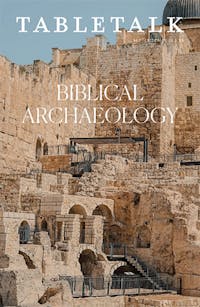
Request your free, three-month trial to Tabletalk magazine. You’ll receive the print issue monthly and gain immediate digital access to decades of archives. This trial is risk-free. No credit card required.
Try Tabletalk NowAlready receive Tabletalk magazine every month?
Verify your email address to gain unlimited access.
Writing in ancient Israel was done not only on papyrus and parchment but also on broken pieces of pottery (called ostraca), of which many have survived since pottery is so durable. Archaeologists in 1935 and 1938 found twenty-one ostraca in the destruction layer at Lachish, an important fortified city in Judah, which was captured by the Babylonian king Nebuchadnezzar during his conquest of Judah in 588–586 BC. They are known as the Lachish letters, although most scholars identify only twelve as actual letters.
The twelve letters were found in a room near the outer gate, often called the guardroom since it contains military correspondence. Half are fragmentary, while the others vary from around three to ten sentences in length. They all seem to be written by subordinates stationed somewhere outside Lachish to their commander in Lachish. It is unclear, however, how many individuals are involved since only one (#3) contains the name of the sender, Hoshayahu, and three (#2, 3, 6) the name of the recipient, Yaush. It was not necessary to include names since the one delivering the letter would provide that information. Each letter begins with a greeting invoking God’s name Yahweh, which seems to have been pronounced at this time; e.g., “May Yahweh cause my lord to hear a report of peace.” (Later Jews would not speak God’s covenant name, “Yahweh,” but they would utter “Adonai” in its place.)

The contents of the letters generally match the biblical description of the time before the Babylonian conquest. Letter 3 mentions Israelites going to Egypt on official business (see Jer. 26:20–23; 37:7; Ezek. 17:15), and the last line shows that prophets (such as Jeremiah) were a part of the political scene, known by the military: “And as for the letter of Tobiyahu, the servant of the king, which came to Shallum son of Yada from the prophet saying, ‘Guard yourself!’, your servant has sent it to my lord.” In Letter 6, the sender comments that the words of someone (the text is unreadable) “are not good, to slacken hands [i.e., to discourage].” Note the parallel complaint against Jeremiah, using the same wording (Jer. 38:4). The end of Letter 4 confirms the use of (fire) signals (Jer. 6:1): “We are watching the [fire] signals of Lachish in accordance with all the signs which my lord gave, for we cannot see Azekah.” It is debated whether the last phrase means that Azekah had been destroyed by the Babylonians (see Jer. 34:7) or was just not physically visible from the position of the writer.
